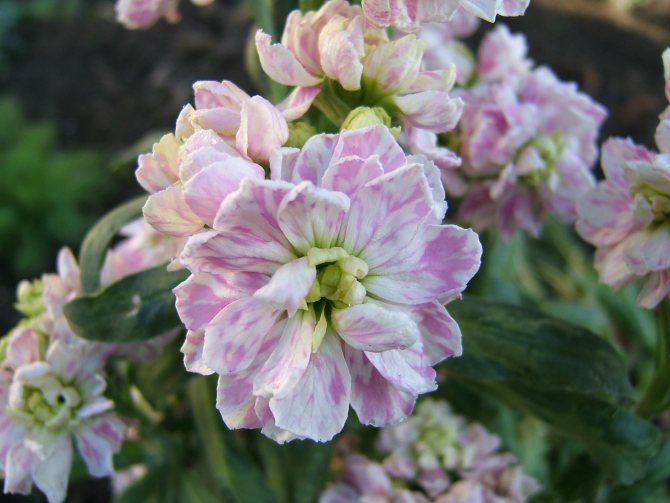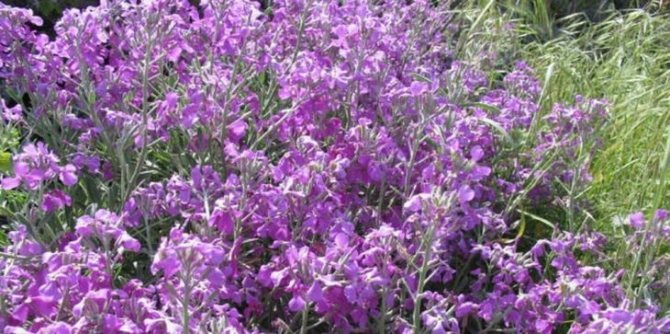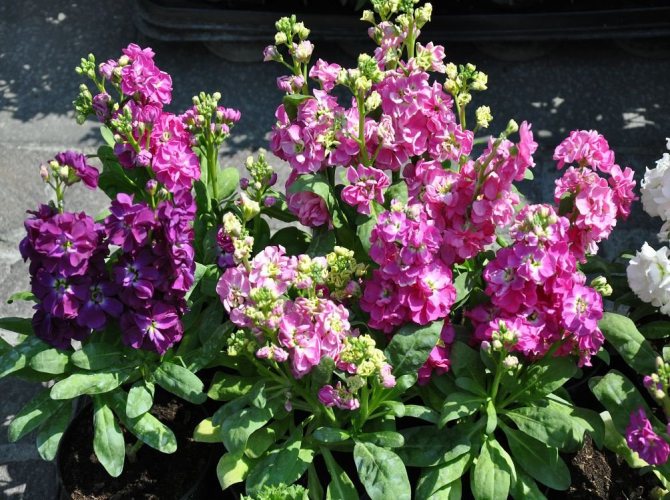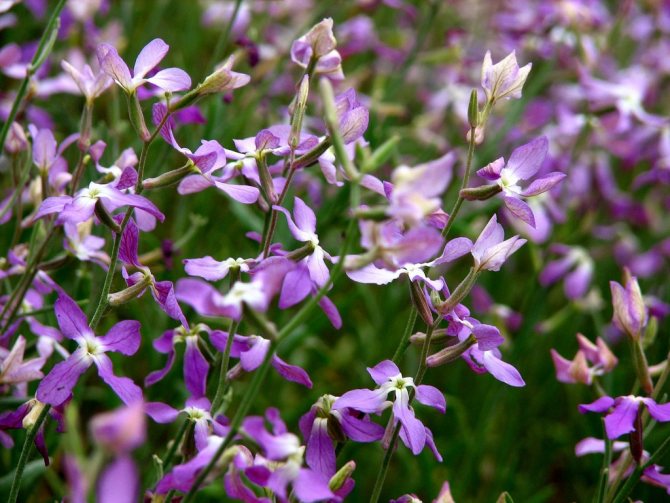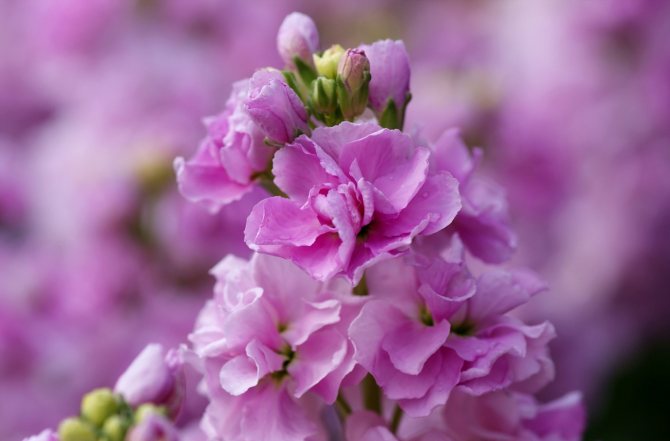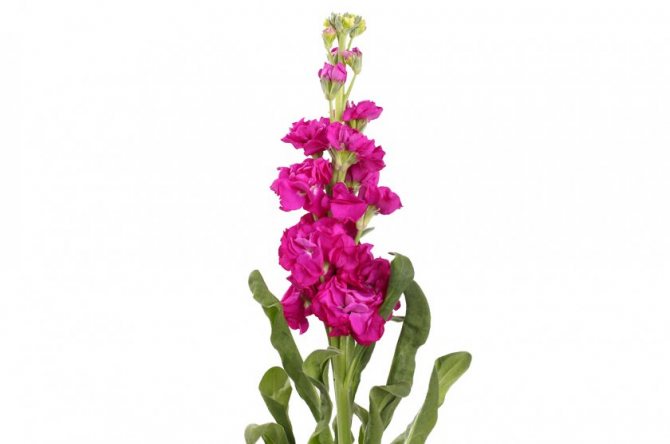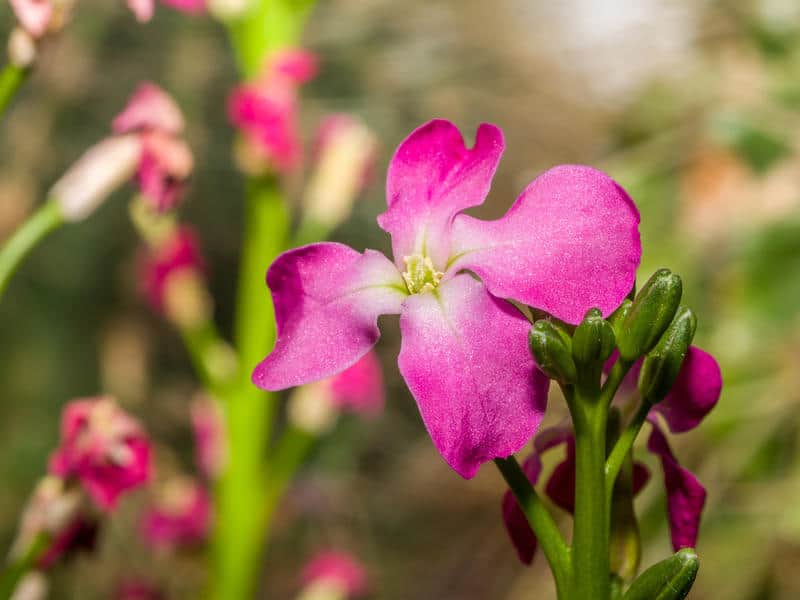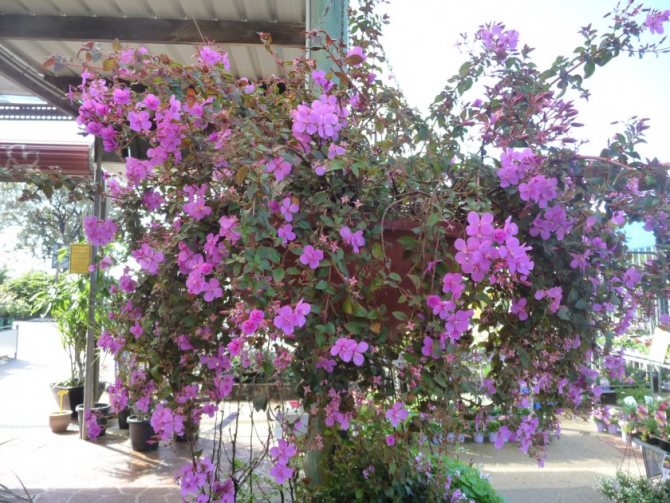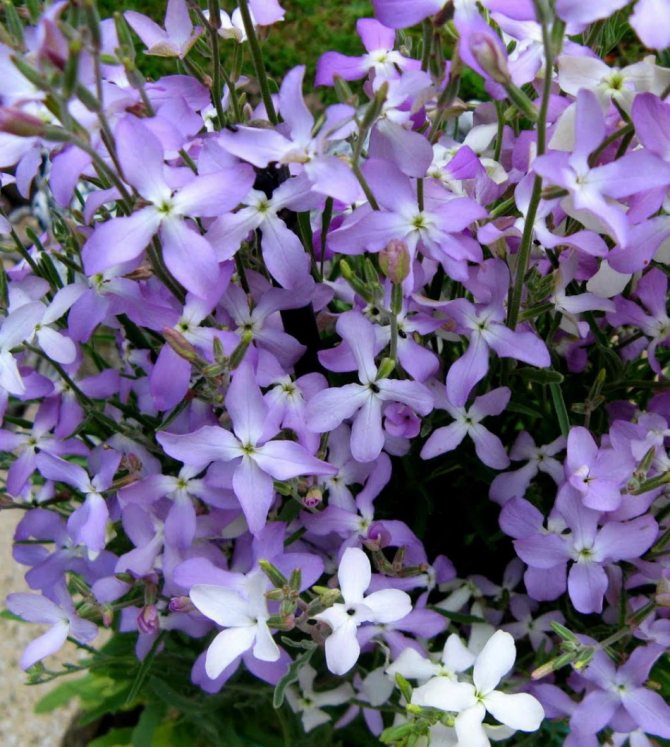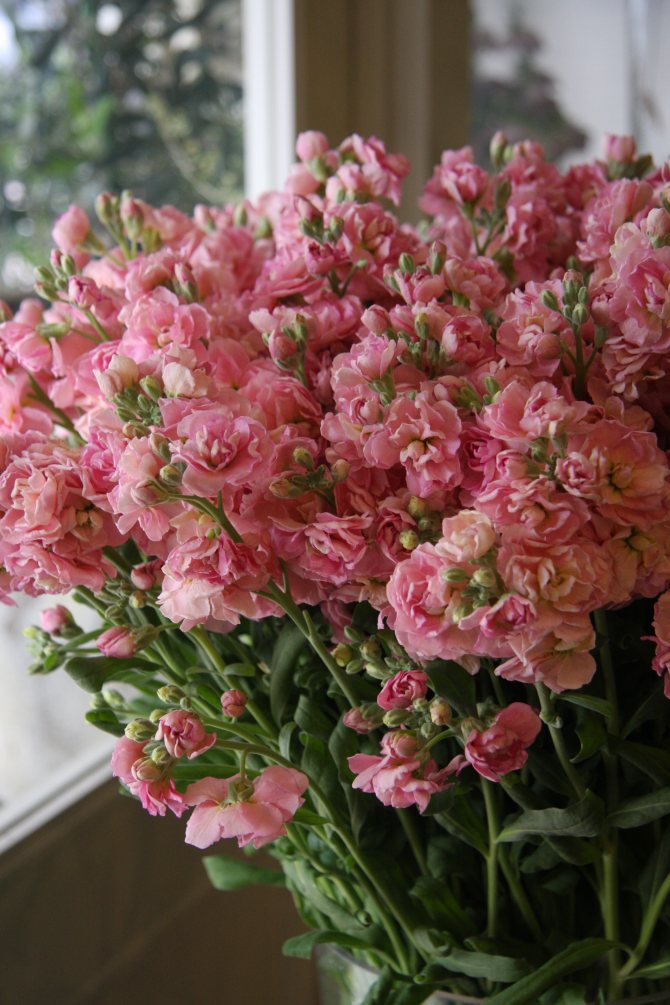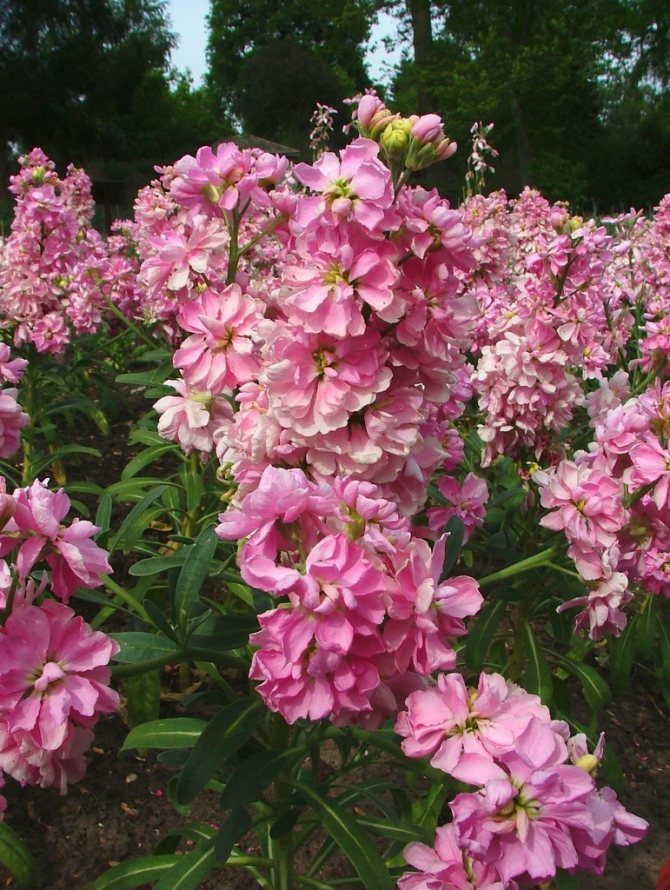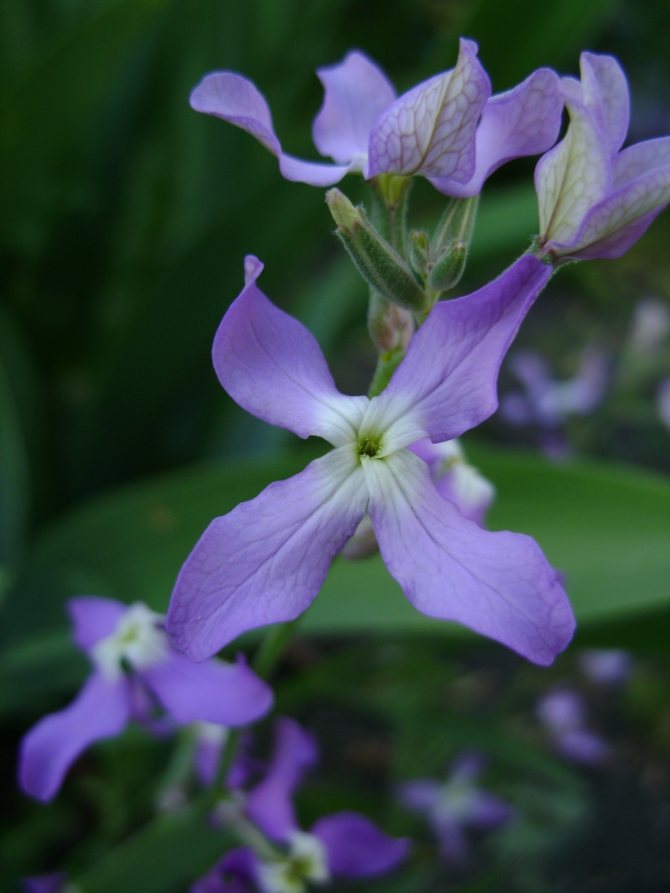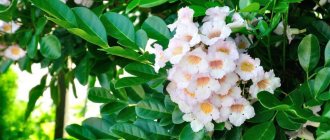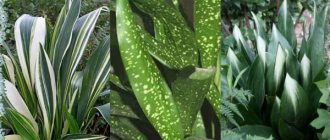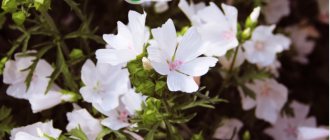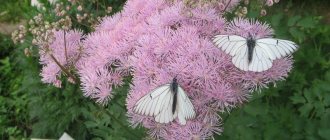Matthiola or levkoy, night violet, evening scent is a flowering herb belonging to the family Crucifers. Homeland - Mediterranean. Modest in appearance, but appreciated for the incredible scent of flowers. With the onset of summer evening, the flowers bloom, giving their scent, therefore it is also called the night violet. A place in a flower garden is most often allocated near terraces, gazebos, house windows.
Mattiola (Levkoy) is a one or perennial plant. The stem is 30-90 cm high, dense, erect, branches. The stem is covered with a thin skin: bare or pubescent. Leaves are lanceolate with serrated or whole edges, soft, pubescent, collected in large numbers in the root zone.
At the end of spring, racemose inflorescences appear on the tops of the shoots. They are bushy and consist of double or plain flowers. The petals are rounded, painted in white, pink, lilac, purple or yellow. The sweetish aroma attracts pollinating insects. In place of the inflorescences, a fruit appears - a small flattened pod containing many small seeds.
Growing Matthiola from Seeds When to Plant

Mattiola seeds photo
Sowing seeds in the ground
Sowing seeds is the main breeding method.
- You can sow in open ground before winter (November)
- or in spring (April).
Select an open, sunny area, make shallow grooves up to 5 cm, evenly distribute the seeds (it is recommended to mix them with sand beforehand to sow less often). The distance between the rows is 20-25 cm.
Moisten the soil if sowing in spring. When 3 true leaves appear on young plants, thin out, leaving the most viable shoots at a distance of 15-20 cm.
Growing seedlings
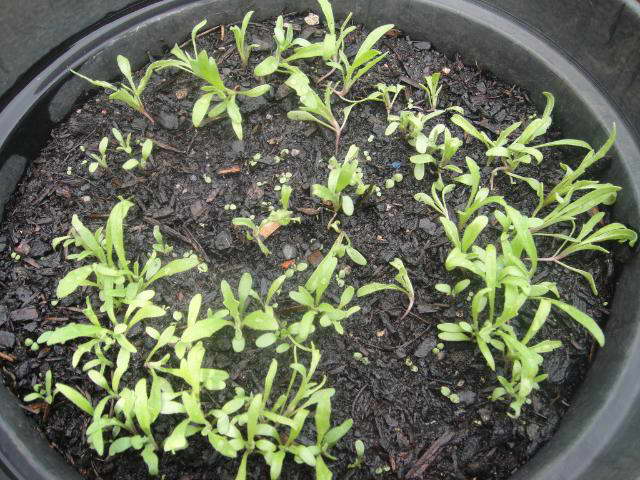

Matthiola from seed photo shoots
To obtain an earlier flowering, seedlings are grown in June. Sowing is carried out with the onset of March.
- Take a box with a mixture of turf and sand.
- It is better to process the seeds for half an hour in a manganese solution, rinse well and dry until flowable.
- The seeding depth is about 5 mm, sow less often. You can scatter seeds over the surface of the soil and sprinkle them with earth.
- Moisten crops with a spray bottle, cover with a bag and germinate in a well-lit place with an air temperature of 10-12 ° C.
- Seedlings will appear quickly: after 3-4 days, remove the bag.
- After a couple of weeks, plant the seedlings in separate containers (small pots or plastic cups). Grow until mid-April.
- Before planting, harden: a week before planting in open ground, take it out for several hours daily in the garden.
- By the end of April, it can be planted in open ground. Matthiola is quite viable and can withstand short return frosts down to -5 ° C.
How to care for seedlings of Matthiola two-horned
What to do after sowing seeds of Matthiola bicorno? There are a number of seedling care activities that must be performed immediately after planting and subsequently carried out:
- Immediately after sowing the seeds, you need to moisten the substrate abundantly (as mentioned above) and cover the container with a lid, film or glass to create a greenhouse. After the emergence of seedlings, the shelter must be removed!
- Before emergence, you need to ventilate the greenhouse daily and wipe off condensation from the covering material to minimize the risk of mold.
- Observe the temperature regime.Immediately after sowing, you need to put the bowl in a room with a temperature of 22-25 degrees Celsius. After emergence, you need to lower t to + 18 ° C during the day, + 16 ° C at night.
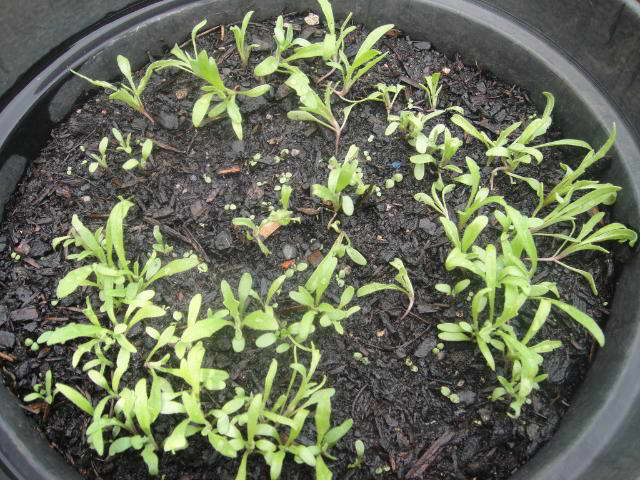

- The soil should always be moderately moist. When shoots appear, even the top layer should be wet; if necessary, water from a spray bottle with clean, settled water at room temperature. After germination of the seeds, watering should be done when the top layer of the earth dries up, water should not fall on the plants themselves!
- Seedlings should be illuminated for 12-14 hours, so you need to put the container on the lightest window sill and it is advisable to use special phytolamps. Without normal lighting, the seedlings will begin to stretch, weaken.
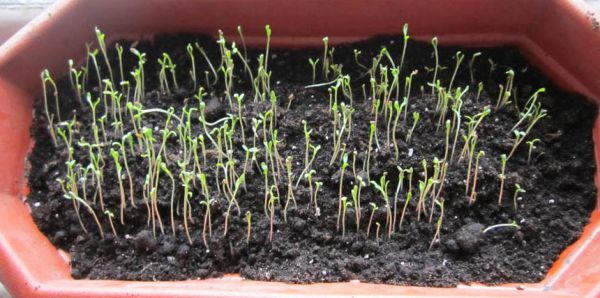

How and where to plant Mattiola in the garden


How to plant matthiola in the ground
Choose a well-lit, open area for planting. It is advisable that no other representatives of the Cruciferous family were previously grown in this place, since the soil can be infected with fungal infections and pests.
Transfer the seedlings along with the earthen clod to the depth of the root system. Observe a distance of 20 cm between the bushes: if planted very densely, a black leg injury is possible. Better to plant in the evening or in cloudy weather. The soil needs fertile, loose, neutral reaction. Heavy soils are destructive.
Diseases and pests
Most of all, matthiola suffers from the cruciferous flea, the prevention of which will be the correct crop rotation, i.e. planting away from areas where other crucifers are growing or have grown in the previous season. At the initial stage, you can determine that a plant is affected by a cruciferous flea by tiny holes in the leaves. Wood ash is effective for the fight. Its solution is sprayed on stems with leaves (1 tbsp. L. Per 1 liter), in dry ash sprinkle the ground in a flower bed.
Of the diseases, the most common and dangerous is the cruciferous keel. The defeat comes from the root, therefore, when growths appear on the aboveground part, nothing can be done, the disease cannot be treated.
Matthiola seedlings may suffer from blackleg, which also has a negative prognosis. All diseased seedlings must be removed and destroyed immediately.
Outdoor care for matthiola
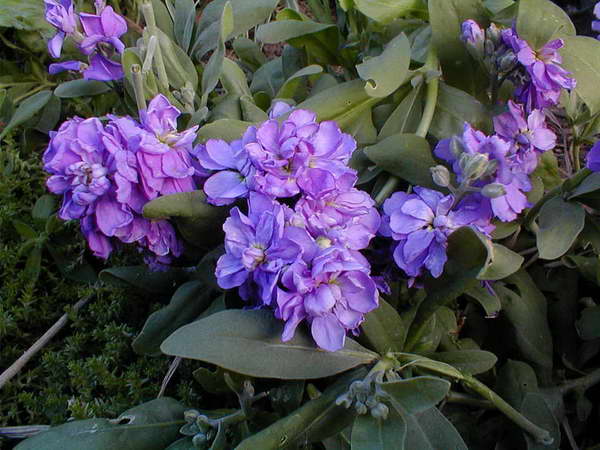

Mattiola gray-haired cultivation from seeds Planting and care in the garden
The plant is unpretentious in care. It is important to provide fertile soil with good drainage and bright lighting.
Watering and loosening the soil
Water regularly, adding water in small increments. And if you spray the plant with water in the evening, the heady aroma will spread more intensively.
Loosen the soil periodically to ensure breathability. It is important to remove weeds as they can quickly drown out the plant.
Top dressing
When planting on fertile soil, additional feeding is not required. In the spring, you can add a solution of complex mineral fertilizers for flowering plants. It is better not to feed organic matter.
Diseases and pests
Fungal infections (black leg, cabbage keel) - possible diseases of Levkoy. To prevent problems, it is important to observe agricultural techniques (distance between plantings), weed, and avoid waterlogging of the soil. Affected plants must be destroyed and treated with a fungicide.
Most often, Matthiola is affected by such pests as whitefish, cabbage butterfly, cruciferous flea. Treat with insecticide.
Plant varieties
In nature, there are about fifty different species of this plant. However, flower growers grow only two varieties of gray-haired and two-horned matthiola.
Two-horned matthiola


Consider the characteristics of a two-horned matthiola. This variety is especially loved by growers for its nocturnal scents. The flowers of this plant do not differ in bright saturated color and during the day they are usually closed altogether, but at night everything changes: the inflorescences open and the garden is filled with fragrance.
Types of mattiola with photos and names
The genus has about 50 species of which more than 600 varieties have been bred.
Among the matthiol there are tall (50-70 cm), medium (30-50) and dwarf (15-30) plants, according to the structure of flowers they are divided into simple and double.
According to the duration of development, there are:
- autumn mattiola (sown in spring, flowering occurs at the end of summer and beginning of autumn, and the seeds ripen the next year);
- winter matthiola (sown in June-July, and bloom next spring);
The two previous varieties do not hibernate in the open field, but are used for "distillation".
- summer matthiola (the most common variety, grown everywhere).
Let's consider the most popular types of matthiola.
Mattiola two-horned Matthiola bicornis


Mattiola two-horned Matthiola bicornis photo
An annual plant up to half a meter high. Shoots and oblong leaves are gray-green in color. Blooms all summer. The flowers are simple, consist of 4 petals, are painted in lilac, light pink color, they gather in dense paniculate inflorescences.
Mattiola gray-haired Matthiola incana
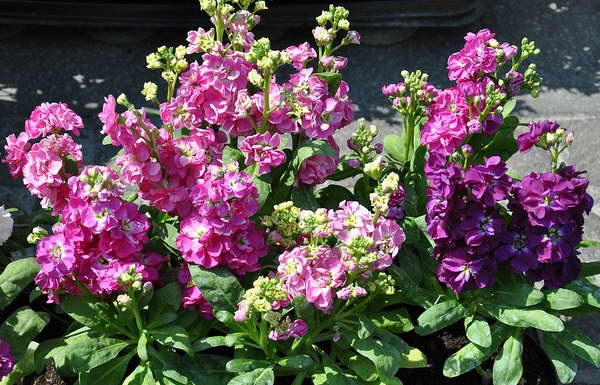

Mattiola gray-haired Matthiola incana photo
Annual 20-80 cm high. Stems are lignified, they are densely covered with oblong leaves with a short downy. Dense inflorescences appear on the tops of the shoots. The flowers are simple or double, painted in white, blue, pink, lilac or dark purple. Flowering begins in June and lasts until the first frost. In the southern regions, flowering is possible even in winter. A fruit with many seeds ripens only in forms with simple flowers.
Fragrant mattiola or fragrant levkoy Matthiola odoratissima


Fragrant mattiola or fragrant levkoy Matthiola odoratissima photo
Perennial herb. Reaches a height of 20-50 cm. Stems and leaves are colored dark green, covered with a long silvery hair. Sessile oblong leaves are collected in a basal rosette. Flowering begins in May-June. Yellow-brown flowers are collected in loose racemose inflorescences.
Description
It is an annual or perennial herb, reaching 0.3-0.9 m. The stem is compacted, erect, strongly branching. Covered in the finest leather: bare or short-haired. Lanceolate sheet plates are solid or with teeth around the perimeter. Hairy and soft to the touch. In the root area, they are collected in fluffy rosettes.
In the last days of May, cluster-shaped inflorescences appear from ordinary or double buds. The petals are round, of various colors: snow-white, violet, lilac, crimson, blue, lemon. The odor emitted attracts pollinating insects
The best varieties of mattiola with photos and names
Mattiola Vintage Matthiola incana Vintage


Mattiola Vintage Matthiola incana Vintage Peach photo
Mattiola gray-haired Vintage is an indispensable attribute of garden decoration in the old style. The charm of the variety cannot be compared to any other flower. These are delicate pastel shades, lightness, special purity and lightness. Terry flowers are very decorative, fitting into almost any style of garden design.
Matthiola cinderella
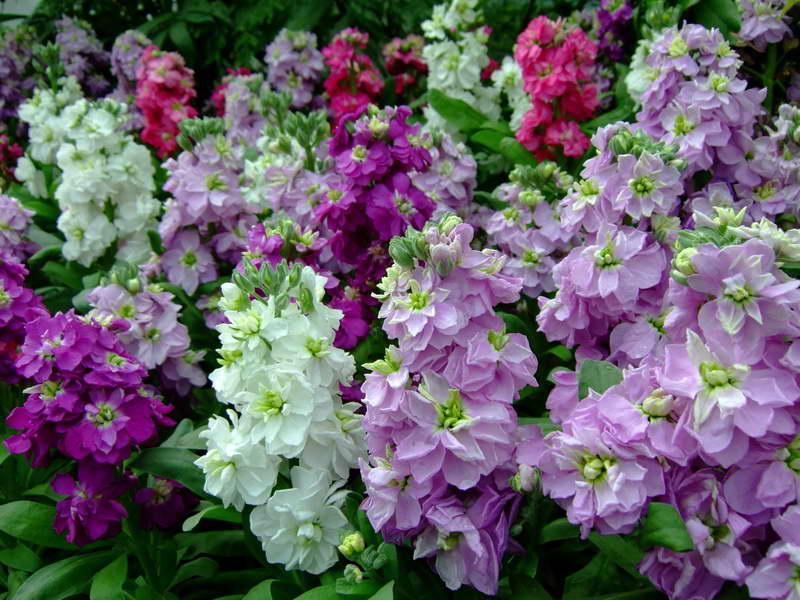

Mattiola Cinderella matthiola cinderella photo
The Cinderella series is distinguished by large double flowers, collected in dense, tall inflorescences. The shades are very diverse, the mix planting looks especially impressive.
Matthiola incana Katz
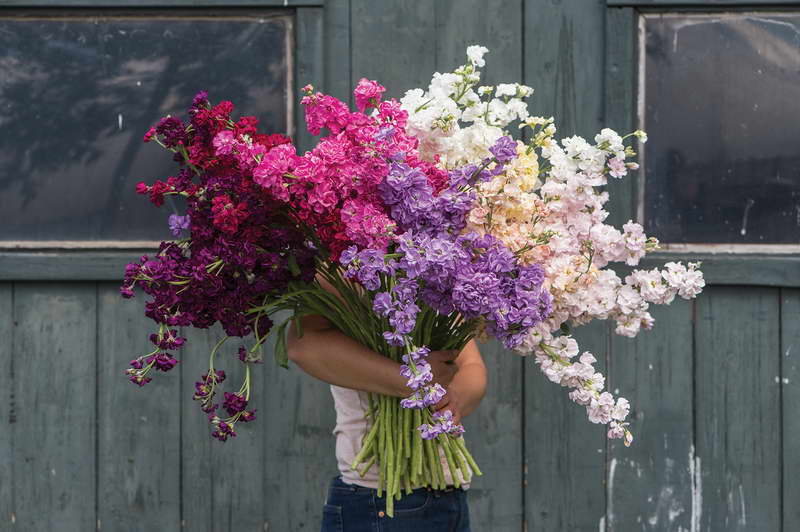

Matthiola incana Katz photo
The Katz series - of amazing beauty bouquet flowers with large double inflorescences on high peduncles. Shades are varied: from white, beige, peach and cream to pink, lilac, purple, lilac and purple.
Matthiola Harmony
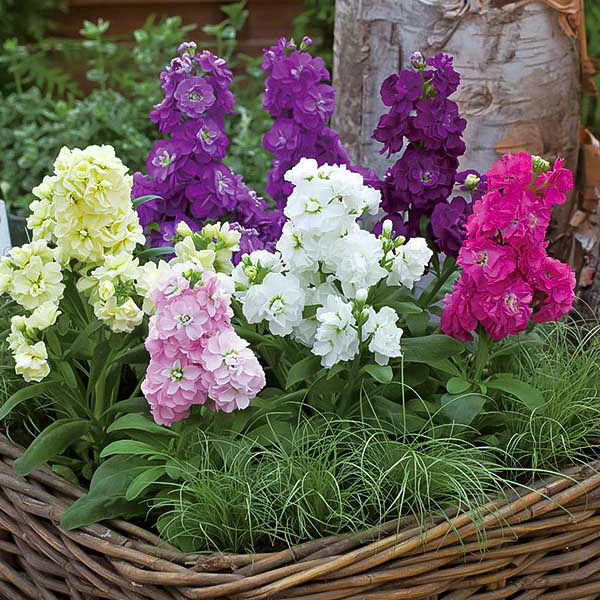

Mattiola harmony matthiola harmony mix photo
The Harmony series is no less charming, looks great in mixed plantings, playing with colors from white-cream pastel shades to rich pink-purple. Inflorescences are large, dense, with massive double flowers.
Matthiola Incana Rich Aroma
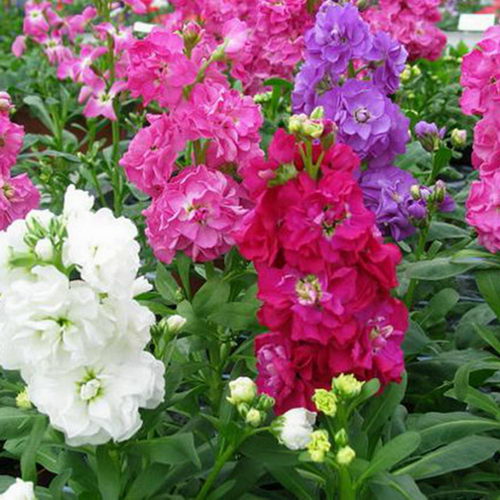

Mattiola Rich aroma Matthiola Incana Rich Aroma photo
Large double flowers of all shades with a thick spicy aroma - this is the Rich Aroma series.Mix planting next to the recreation area will give you an aesthetic pleasure and fill everything around with a pleasant aroma.
Mattiola two-horned lilac variety Lilac Matthiola bicornis lilac
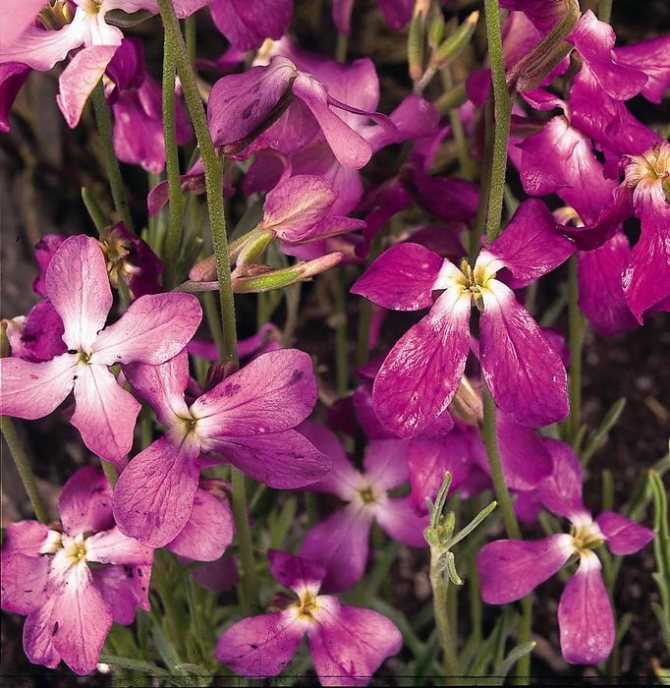

Mattiola two-horned lilac variety Lilac Matthiola bicornis lilac photo
The variety fell in love with its unprecedented endurance: frost and drought-resistant, not picky about the soil, blooms beautifully even in the absence of care. But the most important advantage of the Lilak variety is an incomparable strong aroma that literally fills the space with a whole cloud of a pleasant smell.
Matthiola appleblossom
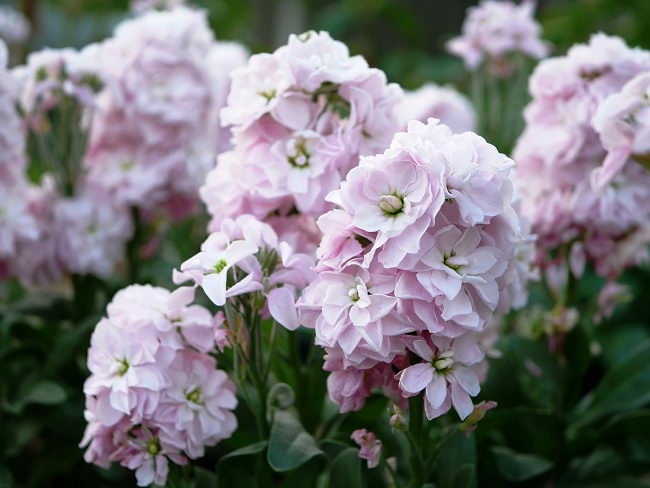

Matthiola Matthiola incana Appleblossom photo
Another vintage variety with delicate double flowers in pastel colors and a pleasant aroma. The flowers really look like apple blossoms.
Exterior use
Several decades ago, mattiola was considered a fairly popular herb. It is less common these days. The plant looks great in the classic park direction. He is very fond of flower growers who prefer traditional styles. Blossoming brushes have an enchanting scent that fills the flower garden with a special charm.
Terry levkoi blend harmoniously with other summer flowers. The most interesting combinations are obtained with rosemary, decorative wormwood, lavender. Two-horned matthiols look good in tandem with pyrethrum and phlox. Ornamental deciduous plants and spicy herbs - thyme, thyme - emphasize the attractiveness of the night violet.
White, pale pink, purple levkoi are planted in the foreground of flower beds and flower beds, as well as along garden paths. Flowers are often used for landscaping and decorating loggias and balconies. They are also suitable for growing in flowerpots. Low-growing varieties are used to decorate ponds and pools.
High varieties of matthiola are suitable for creating floristic compositions. Plants do not lose their original appearance and pleasant smell throughout the week.
Mattiola is a night violet, beautiful and mysterious. The flower is unpretentious to care for, so it is often grown by novice gardeners. The plant opens up ample opportunities for creating original landscape design projects.



